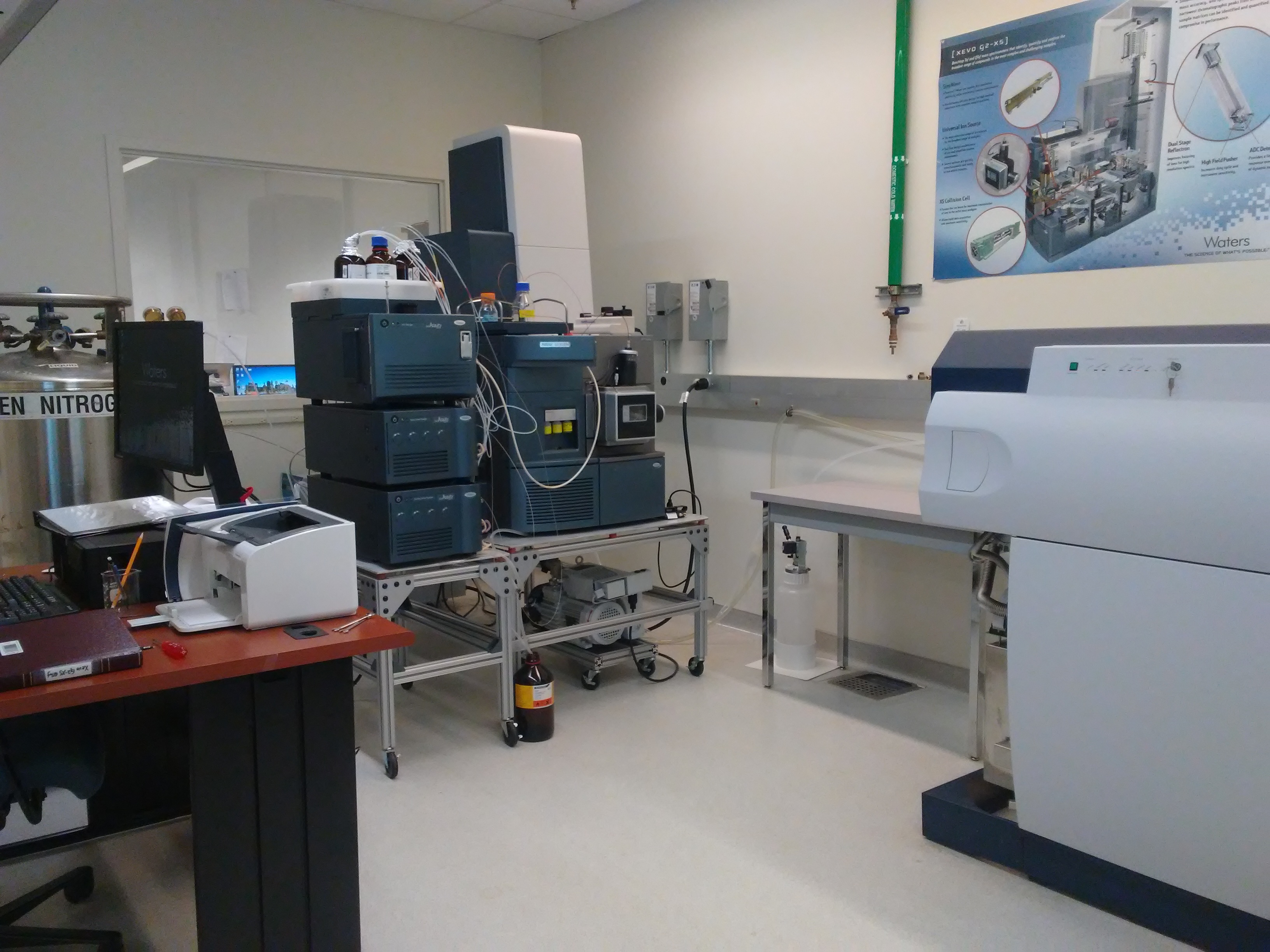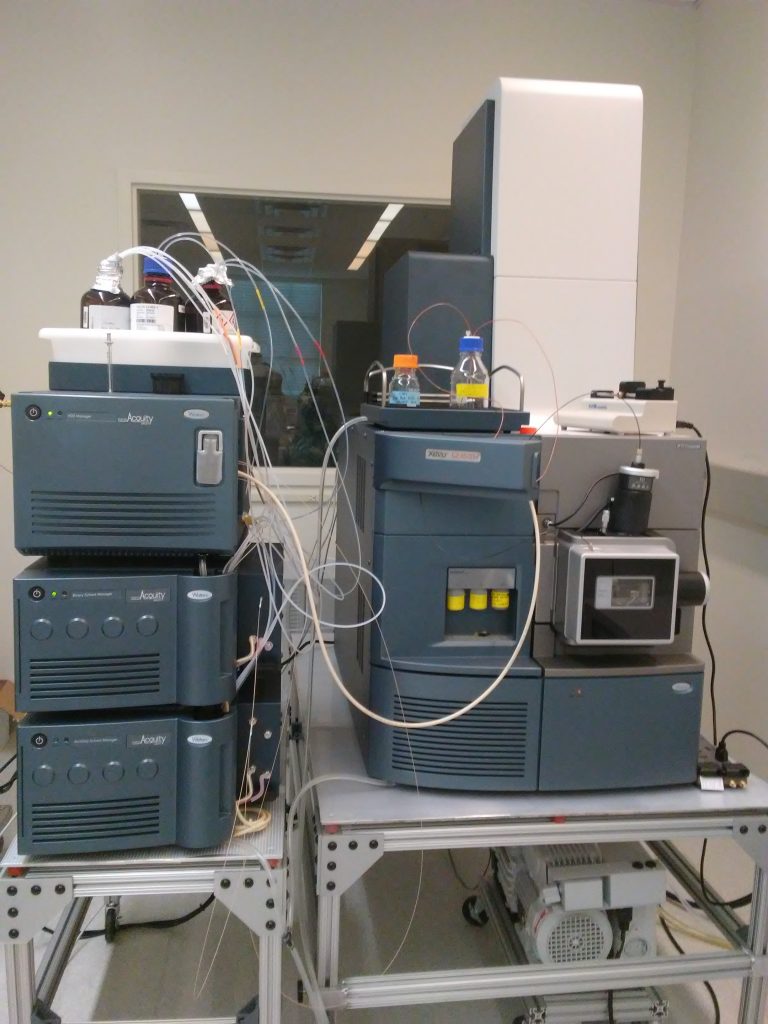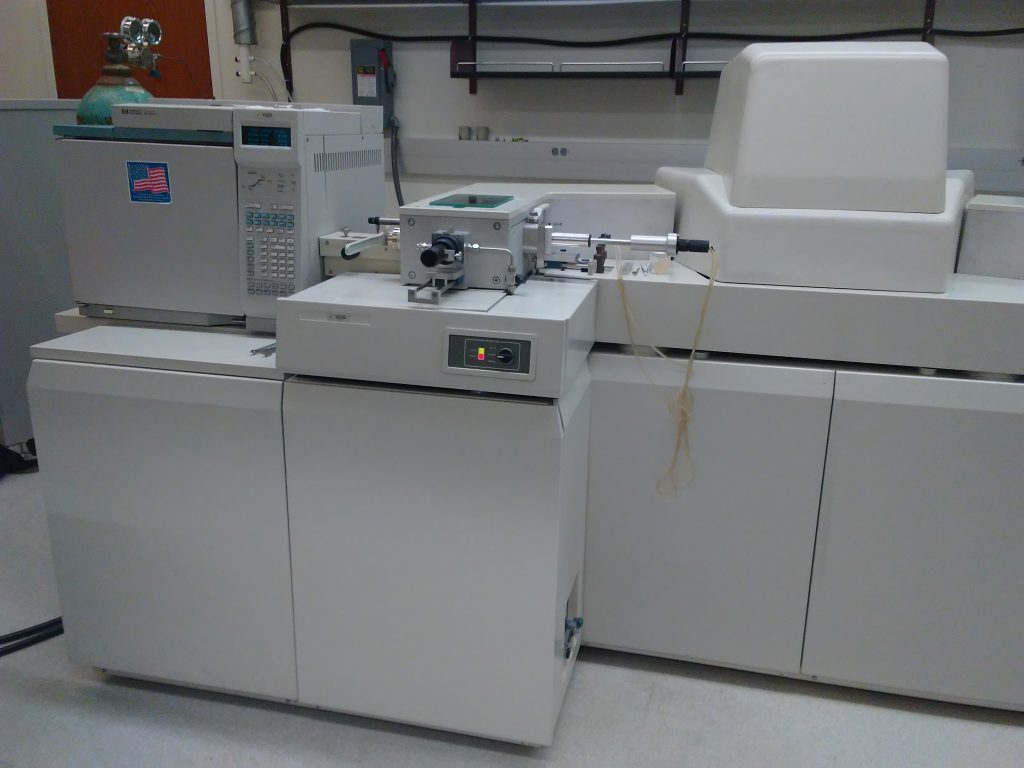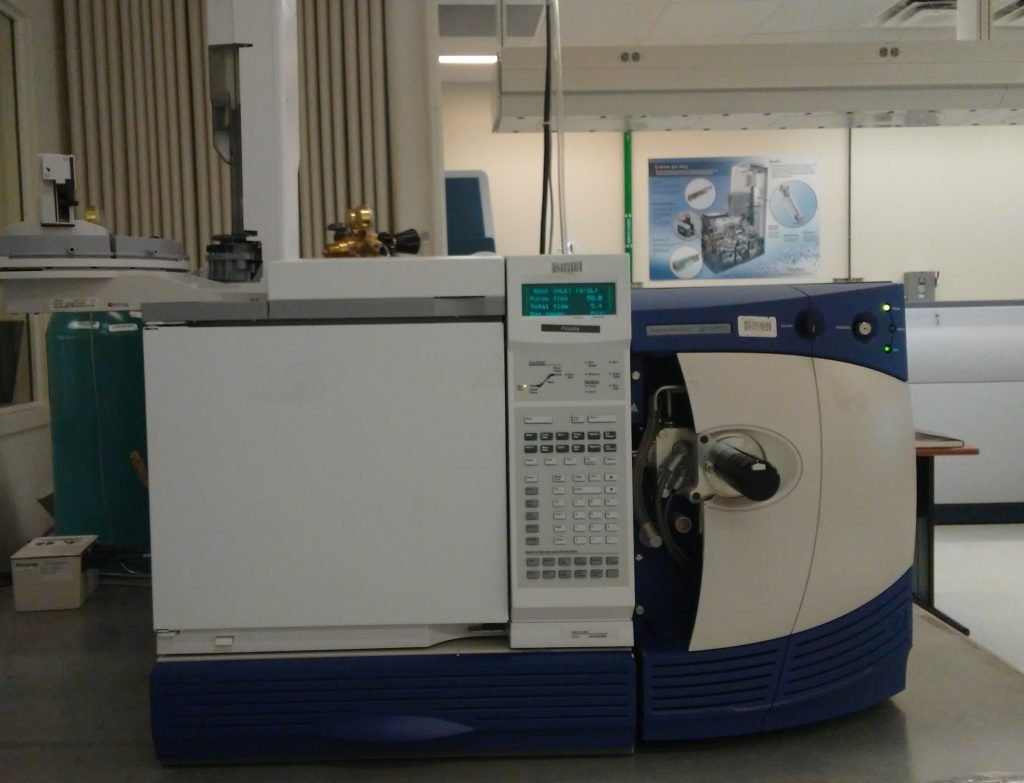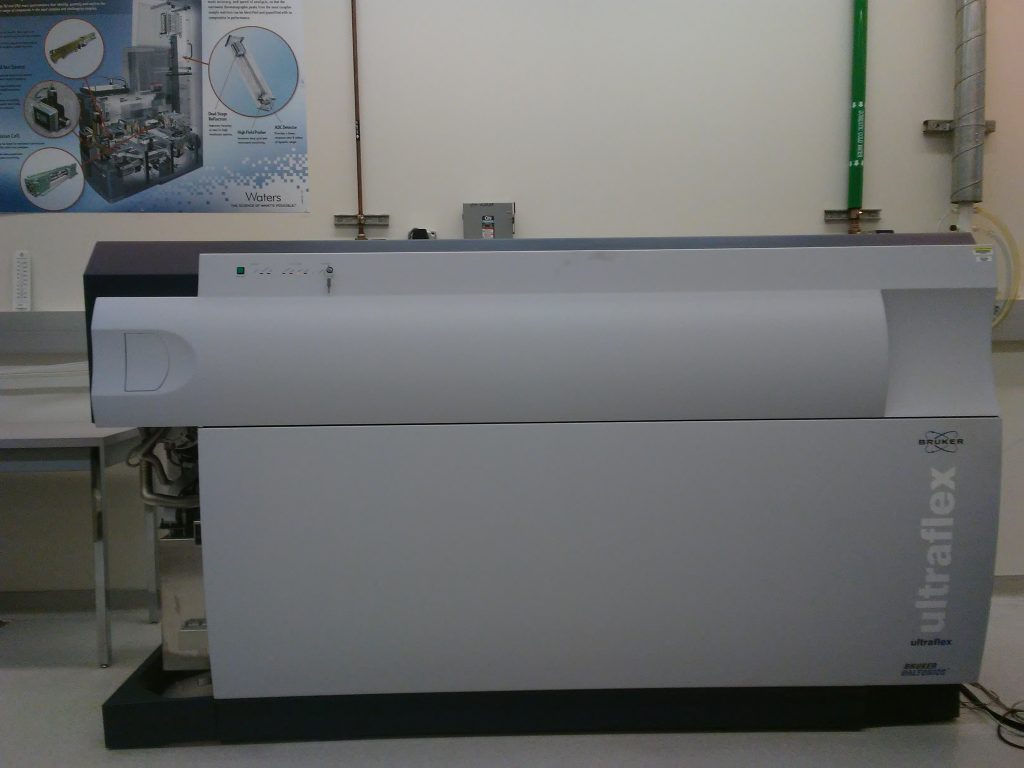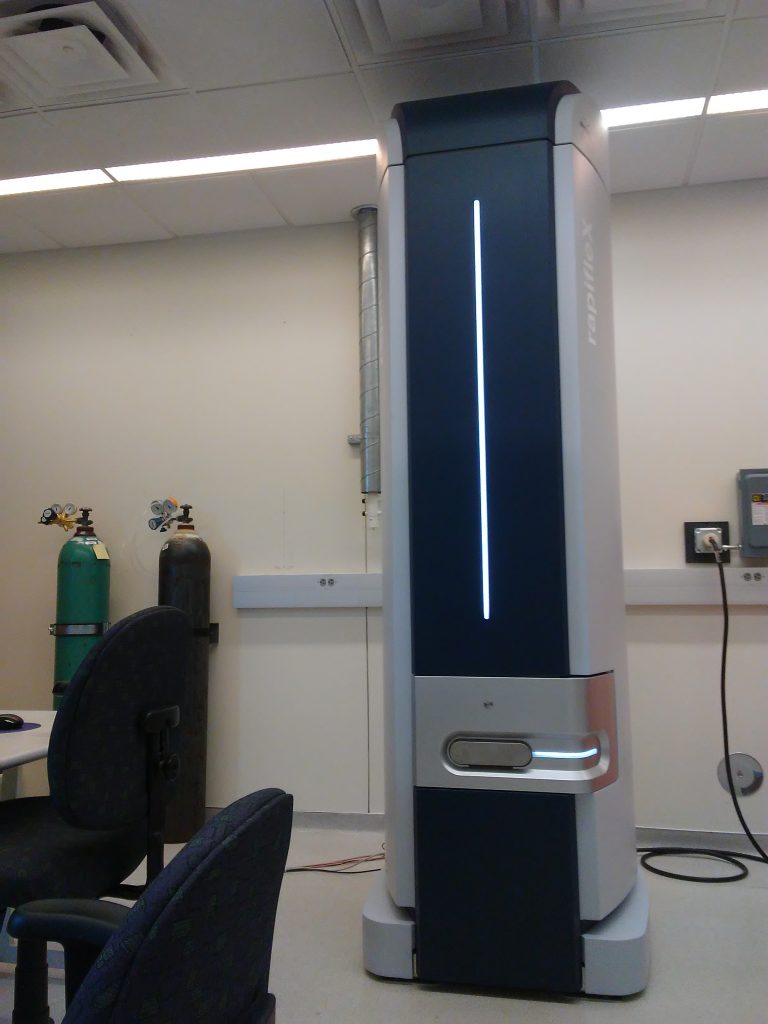1. Bruker HCTUltra PTM Discovery System quadrupole ion trap mass spectrometer coupled with an Agilent 1200 capillary LC
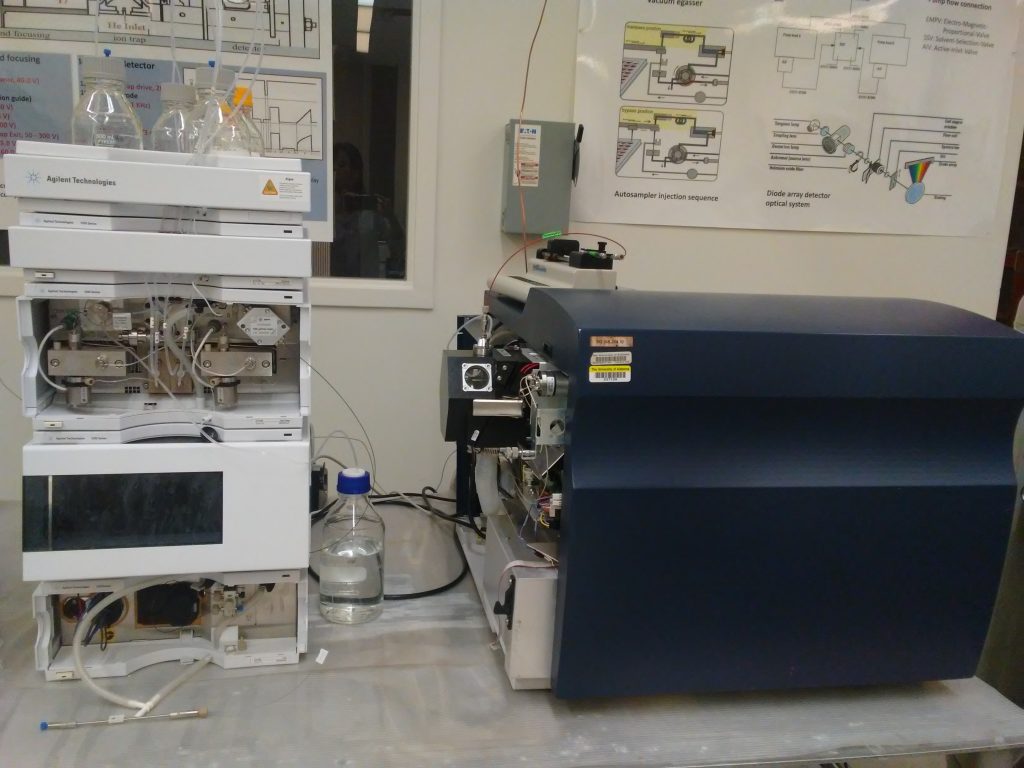
This instrument has three ion sources: electrospray ionization (ESI), nano-ESI, and atmosphere pressure chemical ionization (APCI). Samples are admitted to the ion source through direct infusion or LC. The mass spectrometer analyzer is a quadruple ion trap (QIT), m/z 50 – 3000. Fragmentation of precursor ions are obtained by collision induced dissociation (CID) or electron transfer dissociation (ETD). Application examples include small molecule ESI identification, peptides and oligosaccharides ESI ionization and fragmentation for sequencing, peptide mapping LC-MS/MS, small molecule quantitation by LC-MS/MS multi-reaction monitoring (MRM). Samples must have relatively low volatility and not be suitable for GC-MS. This instrument has a software package for peptide sequencing, Bruker BioTools.
2. Waters Xevo G2-XS QTof mass Spectrometer coupled with 1) ACUITY UPLC M-class with HDX technology and 2) ACUITY UPLC I-class System
This instrument is of high sensitivity, high resolution, and accurate mass on low volatility samples, especially organics and biomolecules. The ESI source contains an ESI sample spray and a lock spray reference for accurate mass lock mass correction. Samples are admitted to the ion source through direct infusion or UPLC. Stepwave ion guide enhances MS sensitivity (standard sample concentration 500 pg/µL, 100 fmol/µL). The QTof analyzer includes a high resolution high stability quadrupole analyzer (MS1), an XS collision cell, and a high performance Orthogonal-acceleration Time of Flight (oaTOF) mass analyzer (MS2). The optimal mass range is m/z 20 – 4000. Application examples include protein hydrogen-deuterium exchange (HDX) characterization, small molecule (e.g. pharmaceuticals, metabolites) profiling, and ESI infusion high resolution measurement of synthetic compounds. This instrument has software packages for peptide sequencing, protein characterization, and analysis HDX data.
- QTof-submittal Form
- Xevo G2-XS QTof Ion Optics
- Xevo G2-XS QTof specification sheets
- Acquity UPLC M-class with HDX technology specification
- Acquity UPLC I-class specification
3. Waters Autospec NT magnetic sector mass spectrometer coupled with HP 6890 GC
This is a high resolution GC-MS instrument with electron impact (EI) ionization source, suitable for thermally stable and volatile small organic molecules. High resolution allows the measurement of very accurate molecular masses, which leads to determination of exact chemical formula. The mass analyzer is an electric-magnetic-electric (EBE) sector (a double focusing sector). GC sample injection methods include manual syringe injection and solid phase microextraction (SPME) fiber injection. The currently installed column is Zebron ZB-5MS, 28 m × 250mm × 0.25mm. Application examples include small molecule high resolution EI MS and high and low resolution GC-MS.
4. Waters Quattro Micro GC
The Quattro micro GC is a tandem mass spectrometer equipped with electron ionization (EI) and chemical ionization (CI) sources for the analysis of volatile and thermally stable analyzes. Samples are introduced via a HP 6890N GC. The currently installed column is a DB-1701, 30 m × 320 mm × 1.0 mm capillary column. An Agilent 7683B autosampler is equipped to the GC inlet. The Quattro micro GC mass analyzer consists of two quadrupoles separated by a hexapole collision cell. This is often referred to as a triple quad, QQQ. Tandem quadrupoles use two stages of mass analysis, the first to pre-select an ion (the precursor ion) and the second to analyze fragments (product ions) induced by CID with an inert gas (Ar) in the collision cell. The Quattro micro GC offers the complete range of automated MS/MS CID experiments: Multiple Reaction Monitoring (MRM), Product Ion and Precursor Ion scans, and Neutral Loss/Gain. A NIST05 EI spectra library is installed with the operating software Masslynx 4.1, which allows library search of acquired EI or MS/MS spectra for compound identification. Application examples include GC-MS or GC-MS/MS of small molecules.
5. Bruker Ultraflex MALDI/TOF MS
Matrix assisted laser desorption ionization (MALDI) refers to the sample ionization source, and time of flight (TOF) is the mass analyzer with linear and reflectron modes. Matrix substances are often mixed with nonvolatile small or large molecules. Upon laser ablation, matrix molecules absorb and transfer laser energy, assisting analyte desorption and ionization. After initial high voltage acceleration analyte ions travel through the flight tube to the detector. The mass range is m/z 0-500 kDa. Application examples include peptide, protein, oligonucleotide, oligosaccharide, polymer, and inorganic compound mass analysis.
6. Bruker RapifleX MALDI-TOF/TOF & MALDI Imaging
The Bruker RapifleX mass spectrometer is a high resolution state-of-the-art system equipped with a Smart3D laser, a MALDI ion source, two TOF analyzer regions, a reflector, a linear detector, and a reflectron detector. Supported experiments include MALDI-TOF MS, MALDI-TOF/TOF high energy CID MS/MS, in-source decay (ISD) MS/MS, MALDI and imaging MS or MS/MS scans. The mass range is m/z 0-500 kDa. Application examples include low volatility species such as peptides, proteins, oligonucleotides, oligosaccharides, polymers, and inorganic compounds. Software packages are available for analyzing biomecolules (BioTools) and polymers (PolyTools). Please contact the Facility manager for special sample preparation requests (e.g. imaging sample preparation).
